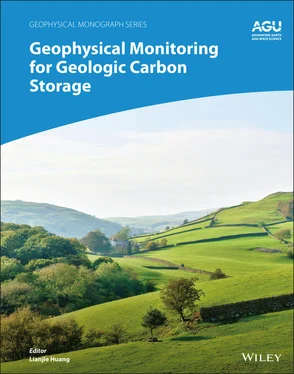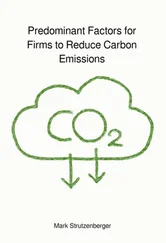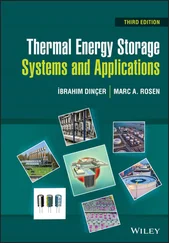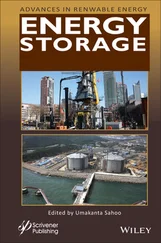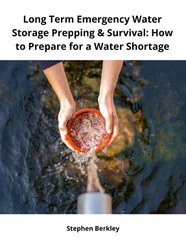Geophysical Monitoring for Geologic Carbon Storage
Здесь есть возможность читать онлайн «Geophysical Monitoring for Geologic Carbon Storage» — ознакомительный отрывок электронной книги совершенно бесплатно, а после прочтения отрывка купить полную версию. В некоторых случаях можно слушать аудио, скачать через торрент в формате fb2 и присутствует краткое содержание. Жанр: unrecognised, на английском языке. Описание произведения, (предисловие) а так же отзывы посетителей доступны на портале библиотеки ЛибКат.
- Название:Geophysical Monitoring for Geologic Carbon Storage
- Автор:
- Жанр:
- Год:неизвестен
- ISBN:нет данных
- Рейтинг книги:4 / 5. Голосов: 1
-
Избранное:Добавить в избранное
- Отзывы:
-
Ваша оценка:
- 80
- 1
- 2
- 3
- 4
- 5
Geophysical Monitoring for Geologic Carbon Storage: краткое содержание, описание и аннотация
Предлагаем к чтению аннотацию, описание, краткое содержание или предисловие (зависит от того, что написал сам автор книги «Geophysical Monitoring for Geologic Carbon Storage»). Если вы не нашли необходимую информацию о книге — напишите в комментариях, мы постараемся отыскать её.
Geophysical Monitoring for Geologic Carbon Storage
Volume highlights include: Geophysical Monitoring for Geologic Carbon Storage
The American Geophysical Union promotes discovery in Earth and space science for the benefit of humanity. Its publications disseminate scientific knowledge and provide resources for researchers, students, and professionals.
Geophysical Monitoring for Geologic Carbon Storage — читать онлайн ознакомительный отрывок
Ниже представлен текст книги, разбитый по страницам. Система сохранения места последней прочитанной страницы, позволяет с удобством читать онлайн бесплатно книгу «Geophysical Monitoring for Geologic Carbon Storage», без необходимости каждый раз заново искать на чём Вы остановились. Поставьте закладку, и сможете в любой момент перейти на страницу, на которой закончили чтение.
Интервал:
Закладка:
7 Chapter 8Figure 8.1 A picture taken when the monitoring geophone string was cemented ...Figure 8.2 Illustration of the locations of the monitoring well, injection w...Figure 8.3 CO 2was injected into the reservoir through three horizontal well...Figure 8.4 Typical CO 2and water injection rates in well C313.Figure 8.5 A velocity model in blue constructed from a well log in yellow fr...Figure 8.6 (a) First‐arrival times of downgoing waves of synthetic offset VS...Figure 8.7 Velocity differences between inverted and initial velocity models...Figure 8.8 Double‐difference tomography results of source locations of basel...Figure 8.9 Double‐difference tomography results of the velocity difference p...Figure 8.10 Comparison among (a) the upgoing waves of the baseline (2007) VS...Figure 8.11 Comparison of the migration image differences obtained from (a) ...Figure 8.12 A wave‐equation migration image of the upgoing waves of the 2009...Figure 8.13 The image profiles along the monitoring well and the offset VSP ...Figure 8.14 The profiles imaging on the angle domain along the monitoring we...Figure 8.15 Illustration of the profiles along different offset VSP source l...
8 Chapter 9Figure 9.1 A map showing the location of the NS walkaway VSP shot line (blue...Figure 9.2 Flowchart of the VSP data‐processing steps.Figure 9.3 Schematic illustration of upgoing/reflection raypaths (purple lin...Figure 9.4 Common‐receiver gathers of walkaway VSP data recorded at geophone...Figure 9.5 Common‐receiver gathers of walkaway VSP data recorded at geophone...Figure 9.6 Common‐receiver gathers of walkaway VSP data recorded at geophone...Figure 9.7 RTM imaging results of (a) 2008 and (b) balanced 2009 walkaway VS...Figure 9.8 Angle‐domain RTM images: (a) before and (b) after removing artifa...Figure 9.9 The same as Figure 9.7, but with angle‐domain analysis and proces...
9 Chapter 10Figure 10.1 A velocity model obtained after applying a median filter with a ...Figure 10.2 A velocity model obtained after applying another median filter w...Figure 10.3 Conventional reverse‐time migration image of the synthetic walka...Figure 10.4 Least‐squares reverse‐time migration image of the synthetic walk...Figure 10.5 Conventional reverse‐time migration image of the synthetic walka...Figure 10.6 Least‐squares reverse‐time migration image of the synthetic walk...Figure 10.7 Shown here are 21 sources picked around a north‐south line for r...Figure 10.8 Shown here are 46 sources picked around a north‐south line for r...Figure 10.9 Image obtained using the conventional reverse‐time migration wit...Figure 10.10 Image obtained using the least‐squares reverse‐time migration w...Figure 10.11 Image obtained using the conventional reverse‐time migration wi...Figure 10.12 Image obtained using the least‐squares reverse‐time migration w...Figure 10.13 Shown here are 22 sources picked around an east‐west line for r...Figure 10.14 Shown here are 41 sources picked around an east‐west line for r...Figure 10.15 Image obtained using the conventional reverse‐time migration wi...Figure 10.16 Image obtained using the least‐squares reverse‐time migration w...Figure 10.17 Image obtained using the conventional reverse‐time migration wi...Figure 10.18 Image obtained using the least‐squares reverse‐time migration w...Figure 10.19 Source locations in a 4 km ×4 km region around the monitoring w...Figure 10.20 Front view of the 3D migration image obtained using the convent...Figure 10.21 Front view of the 3D migration image obtained using the least‐s...Figure 10.22 Back view of the 3D migration image obtained using the conventi...Figure 10.23 Back view of the 3D migration image obtained using the least‐sq...
10 Chapter 11Figure 11.1 Time‐lapse P‐wave and S‐wave velocity models for monitoring Brad...Figure 11.2 (a) Time‐lapse change in P‐wave velocity; (b) time‐lapse change ...Figure 11.3 Initial (a) P‐wave and (b) S‐wave velocity models for inversion ...Figure 11.4 Time‐lapse changes of P‐wave and S‐wave velocities in the monito...Figure 11.5 Time‐lapse changes of P‐wave and S‐wave velocities in the monito...Figure 11.6 Convergence plots of (a) the data misfit and (b) the model misfi...Figure 11.7 (a) Time‐lapse walkaway VSP surveys at the SACROC CO 2‐EOR field;...Figure 11.8 (a) Time‐lapse difference obtained using conventional waveform i...
11 Chapter 12Figure 12.1 Arbitrary seismic line through (a) Ip and (b) Is volumes includi...Figure 12.2 Stack of fractional change in shear‐wave splitting parameter in ...Figure 12.3 Crossplot of daily produced fluid in wells within Vacuum Field 9...Figure 12.4 Map of time‐lapse change in the shear‐wave splitting parameter m...Figure 12.5 Percentage difference in maximum trough amplitude between zero‐a...Figure 12.6 Map of percentage porosity in a carbonate buildup in west‐centra...Figure 12.7 Location map and stratigraphic column of the Kevin Dome Phase II...Figure 12.8 At Wallewein 22‐1 well, inverted Ip, Is, density log from indepe...Figure 12.9 (a) Inverted Is from PP‐inversion after applying a constant glob...Figure 12.10 The oscillation‐like ringing artifacts of the inverted density ...Figure 12.11 Crossplot between density porosity and computed P‐wave impedanc...Figure 12.12 Crossplot of measured density porosity and S‐wave impedance (Is...Figure 12.13 Map of implied porosity from transforms derived from porosity‐i...Figure 12.14 Mid‐Duperow porosity derived from average density values from q...Figure 12.15 Graph of average Ip values derived from the quadri‐joint invers...
12 Chapter 13Figure 13.1 This area of investigation was part of a Detailed Area Study (DA...Figure 13.2 Synthetic seismic generation and scenario comparison workflow. T...Figure 13.3 (a) CO 2‐brine mixing models. The bulk modulus and density (green...Figure 13.4 Well log with fluid substitution results: V p, V S, ρ, and gathers...Figure 13.5 (a) Cranfield well CFU 31F reservoir model acoustic impedance (g...Figure 13.6 (a) Cranfield preinjection and (b) postinjection reflection mode...Figure 13.7 Reflection seismic (a) before and (b) after CO 2injection. Ampli...Figure 13.8 Preseismic and postseismic volumes used in differencing operatio...Figure 13.9 (a) P‐wave reflectivity difference volume. Arrow indicates reser...
13 Chapter 14Figure 14.1 The principle of time‐lapse gravity monitoring. In this example,...Figure 14.2 The concept of measuring gravity in borehole and obtaining appar...Figure 14.3 The density contrast (kg/m 3) between CO 2and brine as a function...Figure 14.4 The variation of density as a function of temperature and depth....Figure 14.5 The Micro‐g Lacoste A10 portable absolute gravimeterFigure 14.6 The geologic reservoir model used in the multiphase flow simulat...Figure 14.7 Cross sections of the density difference between the start and t...Figure 14.8 The surface gravity response ((Gal) associated with the CO 2plum...Figure 14.9 The borehole gravity anomaly associated with the CO 2plume after...Figure 14.10 Deployment of the seafloor gravimeter (ROVDOG) at the Sleipner ...Figure 14.11 Side view of the Dover 33 Reef showing the location of the deep...Figure 14.12 Time‐lapse borehole gravity survey results at the MRCSP Michiga...
14 Chapter 15Figure 15.1 Schematic sketch of a typical geological setting for CO 2injecti...Figure 15.2 CO 2phase diagram.Figure 15.3 Fluid resistivity as a function of NaCl concentration and temper...Figure 15.4 Rock bulk resistivity (ρ b) as a function of CO 2saturation (SCO 2Sketch 15.1 Sketch 15.2 Figure 15.5 Example of an electrode array for a surface electrical survey. A...Figure 15.6 Surface bipole source and thin resistive layer model.Figure 15.7 Schlumberger response of deep conductive and resistive layers.Figure 15.8 Example of an anomaly created by a spherical cave of infinite re...Figure 15.9 (a) Change in electrical resistivity due to (b) CO 2plume recove...Figure 15.10 (a) Schlumberger apparent resistivity response for a layer 50 m...Figure 15.11 Dipole‐dipole response for deep conductive and resistive bodies...Figure 15.12 MT response for deep conductive and resistive bodies.Figure 15.13 Spherical body in a uniform inducing field. P is the observatio...Figure 15.14 Geologic section with an irregular surface and overburden and s...Figure 15.15 Anomalous horizontal field at the surface for a resistive spher...Figure 15.16 Anomalous signal normalized by the primary field for a resistiv...Figure 15.17 B Y(in Teslas) as a function of the depth of a 50 m resistive s...Figure 15.18 Response of a 100 Ohm‐m layer 50 m thick at a depth of 1.0 km b...Figure 15.19 The time domain response of a 50 m thick layer of 100 Ohm‐m in ...Figure 15.20 Electric field on the surface for a pole source on the surface ...
Читать дальшеИнтервал:
Закладка:
Похожие книги на «Geophysical Monitoring for Geologic Carbon Storage»
Представляем Вашему вниманию похожие книги на «Geophysical Monitoring for Geologic Carbon Storage» списком для выбора. Мы отобрали схожую по названию и смыслу литературу в надежде предоставить читателям больше вариантов отыскать новые, интересные, ещё непрочитанные произведения.
Обсуждение, отзывы о книге «Geophysical Monitoring for Geologic Carbon Storage» и просто собственные мнения читателей. Оставьте ваши комментарии, напишите, что Вы думаете о произведении, его смысле или главных героях. Укажите что конкретно понравилось, а что нет, и почему Вы так считаете.
